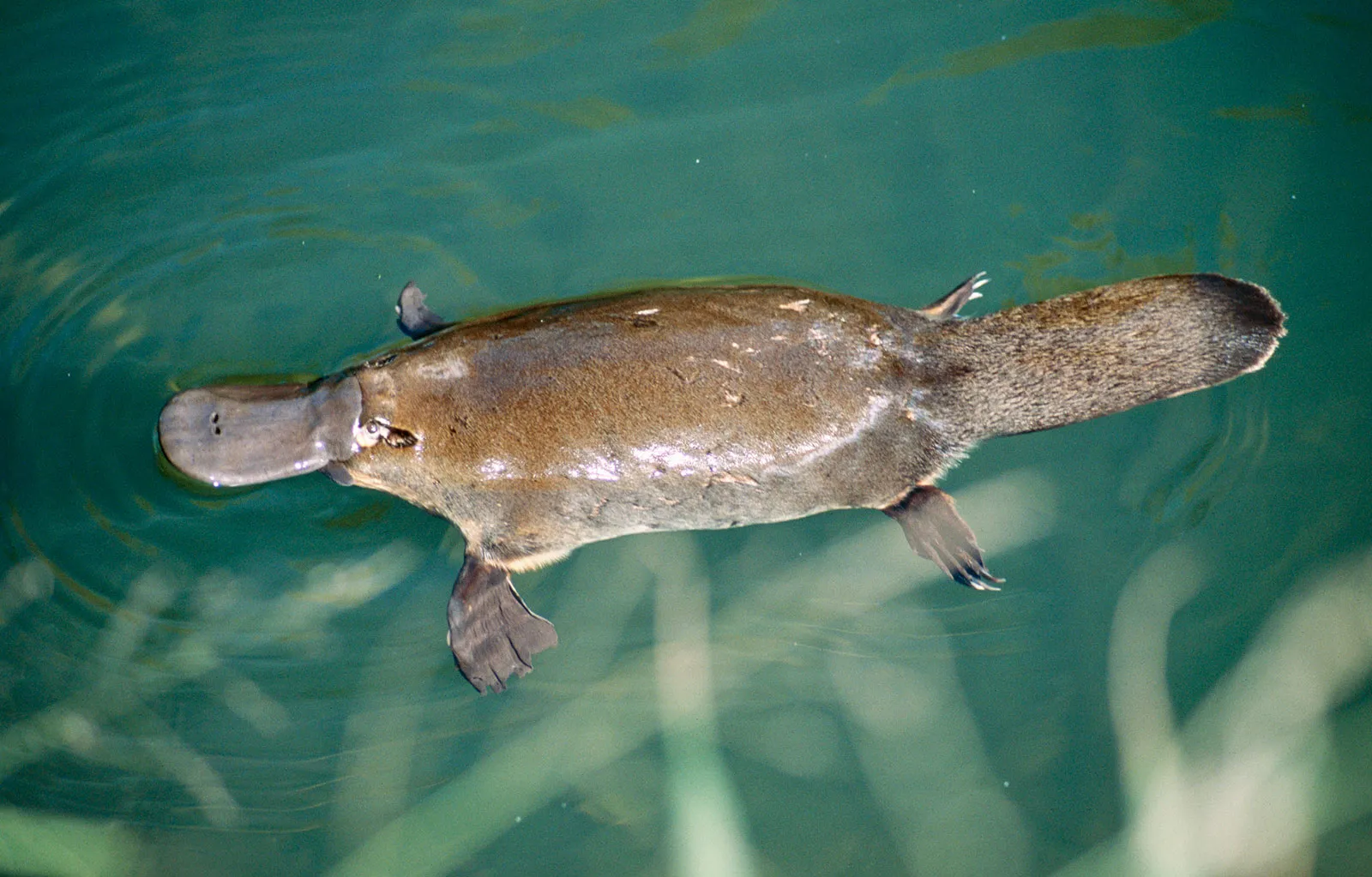
The platypus, also known as the duck-billed platypus, is one of the most peculiar creatures found in the animal kingdom. With its unique combination of mammalian, avian, and reptilian features, the platypus has captivated the curiosity of both scientists and nature enthusiasts alike. In this article, we will explore 19 fascinating facts about the platypus, shedding light on its remarkable adaptations, behavior, and more. From its extraordinary anatomy to its elusive lifestyle, the platypus continues to amaze and astonish researchers around the world. So, let’s dive into the realm of this extraordinary monotreme and uncover the mysteries behind this exceptional creature.
Key Takeaways:
- The platypus is a unique mammal with venomous spurs, egg-laying abilities, and webbed feet for swimming. Their bill helps them hunt, and they have special electroreceptors for finding food in the dark.
- Platypus are solitary, nocturnal creatures with soft, waterproof fur. They face conservation concerns due to habitat loss, pollution, and climate change, making it important to protect these fascinating animals.
The Venomous Foot Spur
One of the most peculiar features of the male platypus is the venomous spur located on its hind foot. This venom is potent enough to cause excruciating pain in humans and can even be lethal to small animals.
A Mammal That Lays Eggs
The platypus is one of the few mammals that lays eggs instead of giving birth to live young. This makes them a fascinating example of monotremes, a group of egg-laying mammals that also includes echidnas.
Webbed Feet for Aquatic Adventures
The platypus is exceptionally well-adapted for its semi-aquatic lifestyle. Its webbed feet, similar to those of ducks, allow it to navigate through water with remarkable agility and speed.
Sleek and Streamlined Body
Their streamlined body, similar to that of otters, enables platypus to effortlessly glide through the water. This hydrodynamic form allows them to hunt and catch prey with ease.
A Bill Like No Other
The platypus possesses a unique feature – a bill that resembles that of a duck and functions as both a sensory organ and a tool for hunting. Sensitive to electrical signals, it helps them locate prey in murky waters.
Incredible Egg Incubation
After laying eggs, the female platypus incubates them by curling around them and keeping them warm with her body. This dedicated mother will continuously care for her eggs until they hatch.
No Nipples, Just Glands
Unlike other mammals, platypus females lack nipples to nurse their young. Instead, they secrete milk from mammary glands, and the milk is lapped up by the offspring.
Superb Swimmers
Platypus are highly skilled swimmers and can hold their breath for up to two minutes underwater. They use their front paws to paddle while their hind feet and tail provide propulsion.
Echolocation Abilities
Similar to bats, platypus have the ability to use echolocation to navigate and detect prey underwater. They emit sound waves through their bills and listen for the echoes to determine their surroundings.
Unique Dietary Habits
Platypus primarily feed on aquatic invertebrates like insects, worms, and crustaceans. They collect their prey by using sensitive bills to detect electrical signals emitted by their movements.
Solitary Creatures
Platypus are generally solitary animals, preferring to live alone or in small family groups. They have large territories that they fiercely defend against intruders of the same sex.
Excellent Diggers
These remarkable creatures have strong limbs and sharp claws, perfect for digging burrows in riverbanks. The burrows serve as a safe shelter to rest, sleep, and protect themselves from predators.
Elusive Nocturnal Creatures
Platypus are primarily active during the night and at dusk, making them quite elusive and challenging to observe in the wild. Their nocturnal behavior helps them avoid predators and competition for food.
Soft and Waterproof Fur
The platypus has dense, waterproof fur that keeps them warm and dry while spending a significant amount of time in the water. This insulation is crucial for their survival in various climates.
Long Lifespan
With proper protection and conservation efforts, platypus have the potential to live for over 17 years in the wild. In captivity, some individuals have been known to survive for more than 20 years.
Adaptation to Extreme Temperatures
Platypus have the ability to regulate their body temperature efficiently, allowing them to survive in both freezing waters and scorching Australian summers.
Feather-Like Appearance
Despite being mammals, platypus have a unique feature of having fine, soft body hair that gives them a somewhat feathery appearance. This adaptation helps them move gracefully through water.
Sensitive Electroreceptors
Platypus have specialized electroreceptors in their bills, allowing them to detect the electric fields produced by prey. This remarkable adaptation helps them locate food accurately, even in complete darkness.
Conservation Concerns
Unfortunately, the platypus population is currently facing threats such as habitat loss, pollution, and climate change. Efforts are being made to protect these unique creatures and preserve their natural habitats.
Now that you’ve learned these fascinating facts, you have a deeper understanding and appreciation for the incredible platypus. These elusive, egg-laying mammals continue to captivate scientists and nature enthusiasts around the world.
Conclusion
The platypus is a truly fascinating and unique creature. With its mix of mammalian, avian, and reptilian features, it stands out as one of nature’s most peculiar creations. From its duck-like bill to its venomous spurs, the platypus never fails to amaze and intrigue. Despite its elusive nature, scientists continue to uncover more about this enigmatic animal. As we learn more about the platypus, we gain a deeper understanding of the diversity and wonder of the animal kingdom.
FAQs
1. Is the platypus venomous?
Yes, male platypuses have venomous spurs on their hind legs. While the venom is not lethal to humans, it can cause excruciating pain.
2. Can platypuses fly?
No, platypuses cannot fly. They are semi-aquatic mammals that spend most of their time swimming and foraging underwater.
3. Do platypuses lay eggs?
Yes, platypuses are one of the few mammals that lay eggs. After a gestation period of about 10 days, the female platypus lays one or two eggs, which she incubates in a burrow.
4. Are platypuses mammals or reptiles?
Platypuses are mammals. Despite their reptilian-like characteristics, including the ability to lay eggs, they possess mammary glands and produce milk to nourish their young.
5. Where do platypuses live?
Platypuses are native to Australia and can be found along the eastern coast and Tasmania. They inhabit freshwater rivers, streams, and lakes.
6. What do platypuses eat?
Platypuses primarily feed on small invertebrates, such as insects, worms, and crustaceans. They use their sensitive bills to detect prey in the water.
7. Can platypuses be kept as pets?
No, it is illegal to keep platypuses as pets in most countries. They are protected species due to their vulnerable population status.
8. How long do platypuses live?
In the wild, platypuses have an average lifespan of around 10-12 years. However, they can live longer in captivity, with some individuals reaching up to 17 years.
9. Are platypuses nocturnal?
Platypuses are primarily active during the day, although they can also be active at night. They have the ability to regulate their body temperature, allowing them to remain active in cold water.
10. Are platypuses endangered?
While the platypus population is currently not classified as endangered, it faces threats such as habitat destruction, pollution, and climate change. Conservation efforts are crucial for their long-term survival.
Was this page helpful?
Our commitment to delivering trustworthy and engaging content is at the heart of what we do. Each fact on our site is contributed by real users like you, bringing a wealth of diverse insights and information. To ensure the highest standards of accuracy and reliability, our dedicated editors meticulously review each submission. This process guarantees that the facts we share are not only fascinating but also credible. Trust in our commitment to quality and authenticity as you explore and learn with us.


